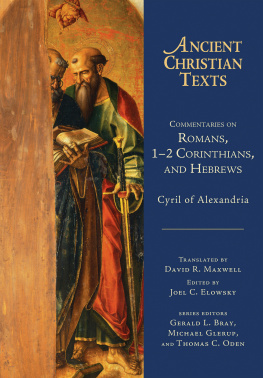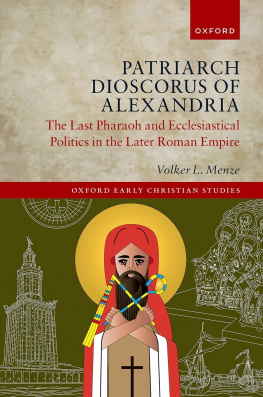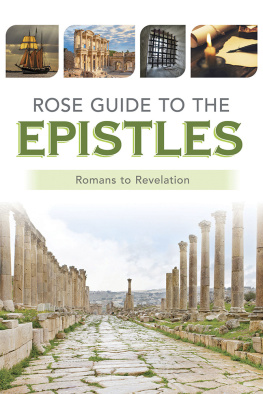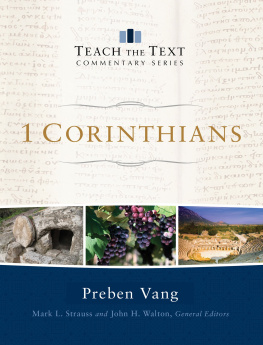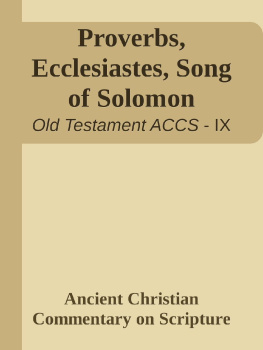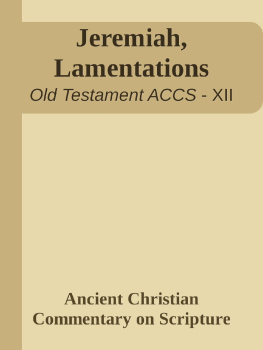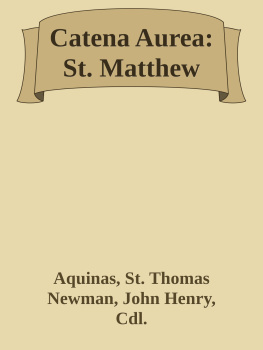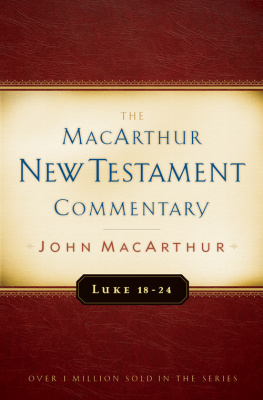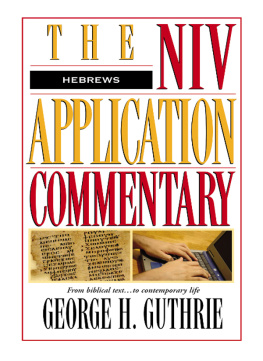Sommaire
Pagination de l'dition papier
Guide
ANCIENT
CHRISTIAN
TEXTS
COMMENTARIES ON
ROMANS,
12 CORINTHIANS,
AND HEBREWS
Cyril of Alexandria
TRANSLATED BY
DAVID R. MAXWELL
EDITED BY
JOEL C. ELOWSKY
InterVarsity Press
P.O. Box 1400, Downers Grove, IL 60515-1426
ivpress.com
2022 by Thomas C. Oden, Gerald L. Bray, Michael Glerup, Joel C. Elowsky, and David R. Maxwell
All rights reserved. No part of this book may be reproduced in any form without written permission from InterVarsity Press.
InterVarsity Press is the book-publishing division of InterVarsity Christian Fellowship/USA, a movement of students and faculty active on campus at hundreds of universities, colleges, and schools of nursing in the United States of America, and a member movement of the International Fellowship of Evangelical Students. For information about local and regional activities, visit intervarsity.org.
The publisher cannot verify the accuracy or functionality of website URLs used in this book beyond the date of publication.
Design: Cindy Kiple
Image: Saints Peter and Paul by Crivelli, Carlo at Accademia, Venice/Art Resource, NY
ISBN 978-0-8308-8727-9 (digital)
ISBN 978-0-8308-2918-7 (print)
This digital document has been produced by Nord Compo.
Abbreviations
Cod. Coisl. | Codex Coislinianus |
Cod. Pantokrator. | Codex Athous Pantokratoros |
Cod. Vat. Gr. | Codex Vaticanus Graecus |
Cod. Vat. Syr | Codex Vaticanus Syriacus |
GCS | Der Griechischen Christlichen Schriftsteller der ersten drei Jahrhunderte |
PG | Patrologia Graeca |
PL | Patrologia Latina |
PTS | Patristische Texte und Studien |
General Introduction
Ancient Christian Texts (hereafter ACT) presents the full text of ancient Christian commentaries on Scripture that have remained so unnoticed that they have not yet been translated into English.
The patristic period (AD 95750) is the time of the fathers of the church, when the exegesis of Scripture texts was in its primitive formation. This period spans from Clement of Rome to John of Damascus, embracing seven centuries of biblical interpretation, from the end of the New Testament to the mid-eighth century, including the Venerable Bede.
This series extends but does not reduplicate texts of the Ancient Christian Commentary on Scripture (ACCS). It presents full-length translations of texts that appear only as brief extracts in the ACCS. The ACCS began years ago authorizing full-length translations of key patristic texts on Scripture in order to provide fresh sources of valuable commentary that previously were not available in English. It is from these translations that the ACT series has emerged.
A multiyear project such as this requires a well-defined objective. The task is straightforward: to introduce full-length translations of key texts of early Christian teaching, homilies and commentaries on a particular book of Scripture. These are seminal documents that have decisively shaped the entire subsequent history of biblical exegesis, but in our time have been largely ignored.
To carry out this mission each volume of the Ancient Christian Texts series has four aspirations:
1. To show the approach of one of the early Christian writers in dealing with the problems of understanding, reading and conveying the meaning of a particular book of Scripture.
2. To make more fully available the whole argument of the ancient Christian interpreter of Scripture to all who wish to think with the early church about a particular canonical text.
3. To broaden the base of the biblical studies, Christian teaching and preaching to include classical Christian exegesis.
4. To stimulate Christian historical, biblical, theological and pastoral scholarship toward deeper inquiry into early classic practitioners of scriptural interpretation.
For Whom Is This Series Designed?
We have selected and translated these texts primarily for general and nonprofessional use by an audience of persons who study the Bible regularly.
In varied cultural settings around the world, contemporary readers are asking how they might grasp the meaning of sacred texts under the instruction of the great minds of the ancient church. They often study books of the Bible verse by verse, book by book, in groups and workshops, sometimes with a modern commentary in hand. But many who study the Bible intensively hunger to have available as well the thoughts of a reliable classic Christian commentator on this same text. This series will give the modern commentators a classical text for comparison and amplification. Readers will judge for themselves as to how valuable or complementary are their insights and guidance.
The classic texts we are translating were originally written for anyone (lay or clergy, believers or seekers) who wished to reflect and meditate with the great minds of the early church. They sought to illuminate the plain sense, theological wisdom, and moral and spiritual meaning of an individual book of Scripture. They were not written for an academic audience, but for a community of faith shaped by the sacred text.
Yet in serving this general audience, the editors remain determined not to neglect the rigorous requirements and needs of academic readers who until recently have had few full translations available to them in the history of exegesis. So this series is designed also to serve public libraries, universities, academic classes, homiletic preparation and historical interests worldwide in Christian scholarship and interpretation.
Hence our expected audience is not limited to the highly technical and specialized scholarly field of patristic studies, with its strong bent toward detailed word studies and explorations of cultural contexts. Though all of our editors and translators are patristic and linguistic scholars, they also are scholars who search for the meanings and implications of the texts. The audience is not primarily the university scholar concentrating on the study of the history of the transmission of the text or those with highly focused interests in textual morphology or historical-critical issues. If we succeed in serving our wider readers practically and well, we hope to serve as well college and seminary courses in Bible, church history, historical theology, hermeneutics and homiletics. These texts have not until now been available to these classes.
Readiness for Classic Spiritual Formation
Today global Christians are being steadily drawn toward these biblical and patristic sources for daily meditation and spiritual formation. They are on the outlook for primary classic sources of spiritual formation and biblical interpretation, presented in accessible form and grounded in reliable scholarship.

